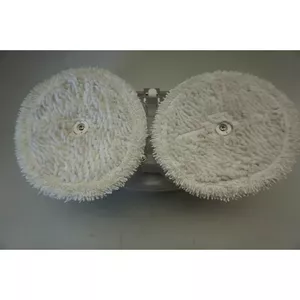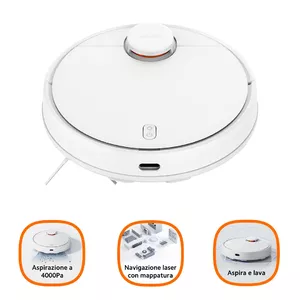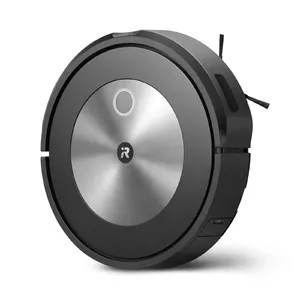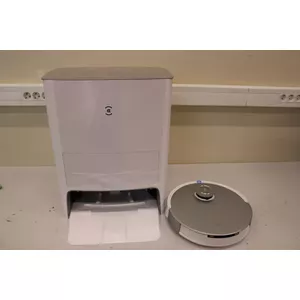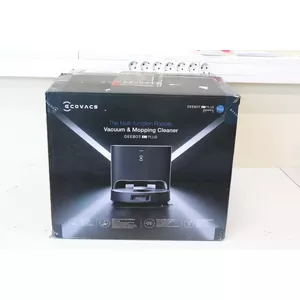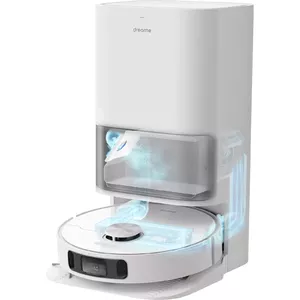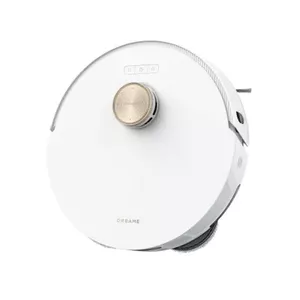more profitable than new ones!
In cart {{totalProductsCount}} item(s)
Your cart is empty
In cart {{totalProductsCount}} item(s)
Your cart is empty
How to choose which robot vacuum cleaner to buy?
Robot vacuum cleaners have become an integral part of our household equipment and have long ceased to be just interesting gadgets. Today their role has become very significant in everyday life, simplifying cleaning in the house and more and more people decide to buy a robot vacuum cleaner home. However, there are a large number of models on the market and it is not always clear what their differences are, what functions are important and what are secondary. In this article we will tell you exactly what you should pay attention to when choosing and how to choose the best robot vacuum cleaner.
Cleaning area of the robot vacuum cleaner
Given that the robot vacuum cleaner is a semi-autonomous and fairly automated device for cleaning the house, then you should start the choice with an assessment of what area a particular model can clean without additional charging. Simple models are able to clean for 40-60 minutes, which is suitable for apartments with an area of 30-80 square meters. Expensive models are equipped with more capacious batteries and can work for several hours, they are recommended for private houses and apartments with a larger area. It is important to take into account that the specified cleaning area in the characteristics of the model can refer to empty rooms. In reality, the vacuum cleaner robot will clean a smaller area due to furniture and obstacles.
The power of the robot vacuum cleaner
Robot vacuum cleaners have a compact design and low power, usually in the range of 20-120 watts. For a typical apartment, a 60-70 watt model is usually sufficient. However, if your house has a lot of garbage, carpets and pets, it is better to choose a more powerful robot vacuum cleaner.
Shape and dimensions of the robot vacuum cleaner
The important aspects when choosing a robot vacuum cleaner are its size and shape. The quality of cleaning depends partly on the design of the device. Robot vacuum cleaners can have different shapes, including round, square, and D-shaped. It's worth noting that round models tend to be less effective at cleaning in corners and along baseboards. They can have difficulty reaching dirt in the corners of a room. Square and D-shaped models do a better job of cleaning in corners and areas adjacent to walls. They can move more confidently and clean surfaces along walls. Dimensions also play an important role. A robot vacuum cleaner should be low enough to pass under furniture such as a sofa or bed. There are slim models with heights as low as 7 centimeters, but most robots are 8-10 centimeters tall. Keep in mind that taller robots may not be able to handle going under low furniture, and cleaning in such areas will have to be done manually.
Robot vacuum cleaner for carpets: what type of brush is needed
Brush types are another important aspect of the choice. Different models may use different types of brushes, and they have a big impact on the efficiency of cleaning in different conditions. Let's take a look at some of the types of brushes:
- Brush brushes are found in budget models of robot vacuum cleaners. They are usually three to four brushes that rotate in a circle and rake dust and debris into the dust collector within a radius of reach. They are great at cleaning hard surfaces such as hardwood floors, linoleum, tile, and laminate. Some robot vacuum cleaner models have two brush brushes that rotate towards each other. This helps push debris inside the vacuum cleaner more efficiently. Single-brush models can be less efficient and sometimes even scatter debris.
- Turbo brushes are characterized by their fast rotation and ability to pick up lint. They are ideal for cleaning carpets, rugs and walkways. Turbo brushes can pick up both large and small debris, as well as handle hair and pet hair.
It is worth noting that certain robot vacuum cleaner models are equipped with both turbo brushes and brush brushes. This combination provides the best cleaning performance in a variety of conditions. Some robot vacuums are also equipped with an ultraviolet lamp that turns on when it comes in contact with a surface. This helps to kill microorganisms such as mites in carpets, which can be important for individuals prone to allergic reactions.
Navigation system of the robot vacuum cleaner
The navigation system and sensors play a key role in how a robot vacuum cleaner moves and cleans without human intervention. Various sensors allow robots to move efficiently and avoid obstacles. Here are the main types of sensors and their purpose:
- Optical sensors are used to detect and avoid obstacles. They help the robot "see" objects, walls and furniture to avoid collisions and choose safe routes.
- Ultrasonic sensors help robots detect doorways, as well as determine distances to objects. This is especially useful when the robot needs to leave a room, climb under furniture, or return to its base to charge.
- Infrared sensors help robots detect and cross wires, avoid falling down stairs, and navigate fluffy carpets. They can also help avoid collisions with furniture.
So, depending on your environment and needs, you can choose a model with certain types of sensors:
- If you have a studio apartment with minimal furniture and hard floors, a budget model with optical sensors can be quite effective.
- If you need to clean several rooms or have a lot of furniture, carpeted floors and doorways, it is recommended to choose a robot with ultrasonic sensors.
- Models with infrared sensors are suitable for residents of high-rise apartments, houses with several floors and those who have fluffy carpets on the floor and a lot of electrical cables from appliances.
Choosing a model with the right sensors will help maximize the use of the robot vacuum cleaner in your home. It's important to note that modern robot vacuum cleaners are equipped with cameras for navigation and can build a map of the room, allowing them to move more skillfully. Some may even provide the ability for the user to set paths of movement via a mobile app.
The volume of the dust collector in a robot vacuum cleaner
Cleaning a robot vacuum cleaner is an important aspect of its maintenance. And the most important part, oddly enough, is cleaning the dust collector regularly. Robot vacuum cleaners usually have a small dust collector capacity, which can range from 0.3 to 1 liter. Models with a dust collector capacity of 0.5 liters can be suitable for apartments with an area of 50-80 square meters, provided there are no pets. If you have furry pets, take into account that the vacuum cleaner will quickly clog with hair. Keep in mind that some models have an indicator for filling the dust collector. This is convenient, because then the robot itself can tell you when the container is full and requires cleaning.
Base for recharging
Robot vacuum cleaners usually come with a charging base, where they return to when they are finished cleaning. Before purchasing, consider that it is important that the base has clearance on both sides, about 1 meter each, so that the vacuum cleaner can correctly navigate and return to the base. Some robot vacuum cleaner models come with docking stations that also act as a built-in dust container. When you're done cleaning, the robot connects to the base, where a built-in vacuum cleaner pulls the dust out of the robot and places it in a bag. This is handy if you have frequent cleaning and emptying of the container.
Cleaning the robot vacuum cleaner
In addition to cleaning the dust bag, every robot vacuum cleaner has at least two other parts that need to be monitored regularly:
- Be sure to clean your robot vacuum cleaner's brushes by hand after each cleaning session, as hair, threads, dust, and pet hair wind up on them. This will help maintain cleaning efficiency.
- Like regular vacuum cleaners, robot vacuums have air filters to capture dust. If you have allergy sufferers living in your home, it is recommended that you choose models with a HEPA filter, which captures up to 99% of the finest dust particles. Remove and clean the filters periodically, and in some models they can be washed and put back in. We also recommend changing the filters for new ones every six months.
Wet cleaning robot vacuum cleaner
The wet mopping feature in robot vacuums provides additional options for taking care of your floor. However, it's important to realize that it's not a full-blown wet mopping and scrubbing of the floor, but rather dusting using a damp cloth. How much you need it depends on your needs. Some robot models are designed primarily for the cleaning function and may not have a dust suction function, while others offer both dry and wet cleaning capabilities. However, it's worth noting that a cleaning robot vacuum cleaner may have limitations in its use. For example, they may not be able to reach corners and difficult areas and you may not always be able to use detergents depending on the model. Therefore, it is important to consider your needs and take a good look at the features of a particular model.
When choosing a robot vacuum cleaner, first look at the area that a particular model of vacuum cleaner can cover without pre-charging, as well as the brushes it is equipped with and the navigation system. The wet cleaning function can be quite useful, especially if you do not have carpets or carpeting, but you will have to pay extra for it.

